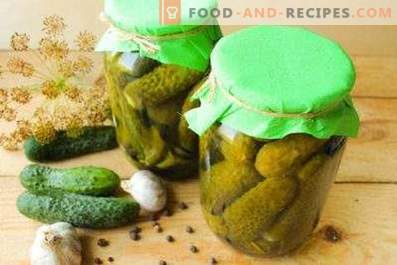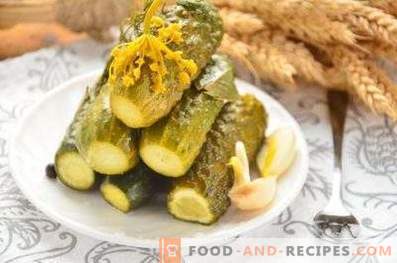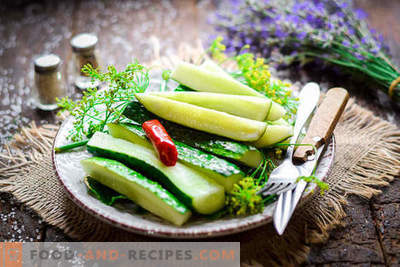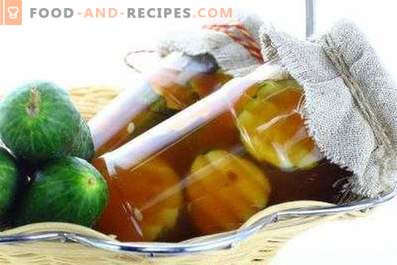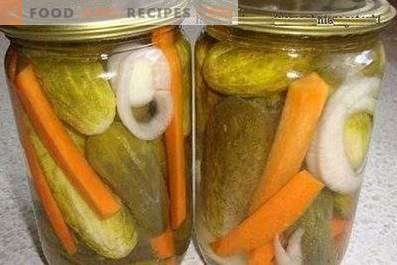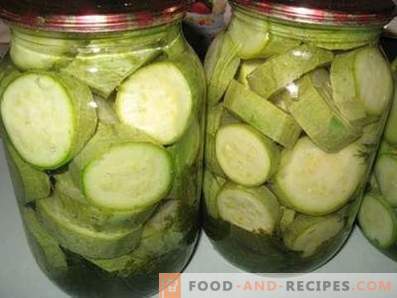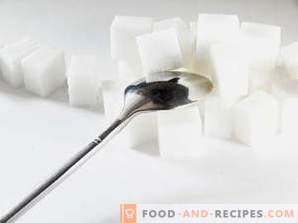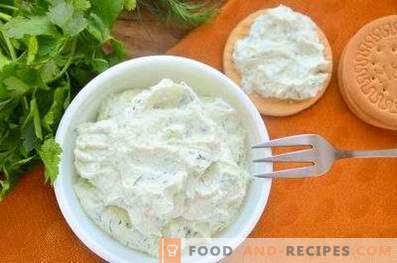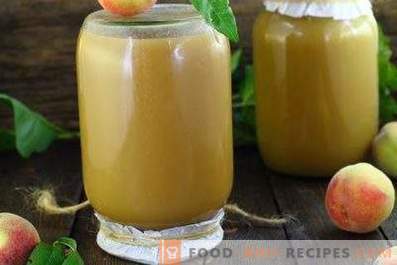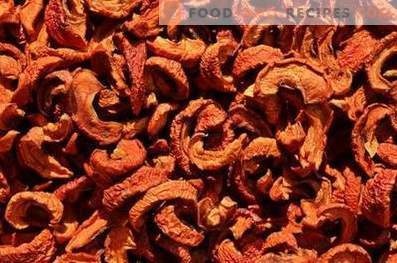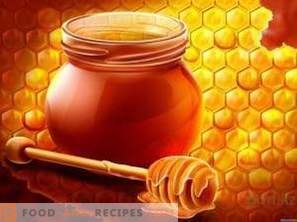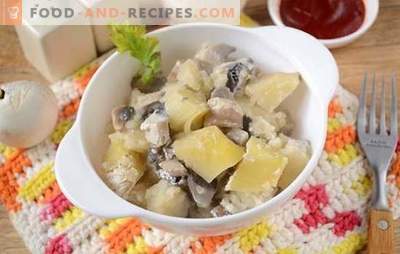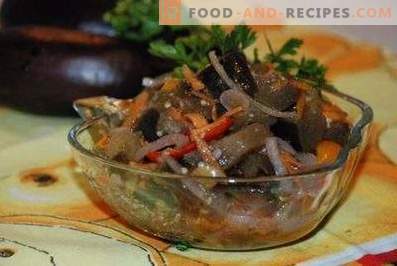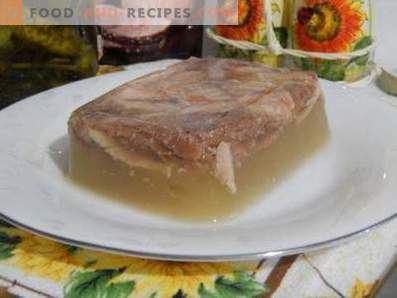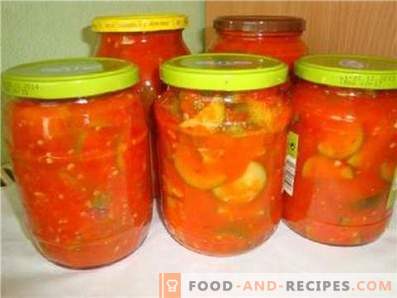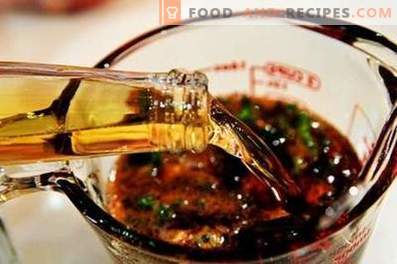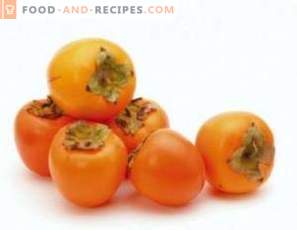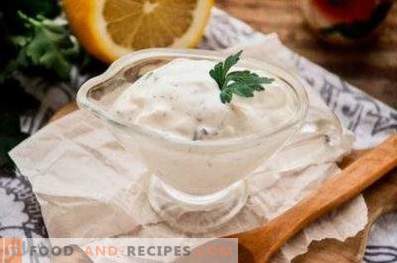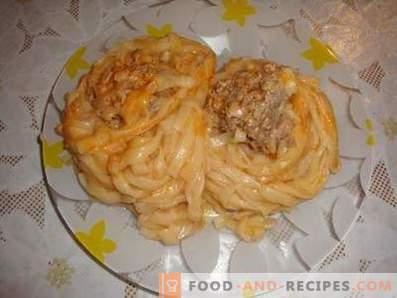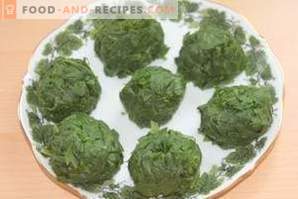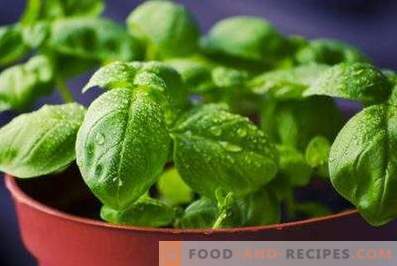
For many years, cucumbers are a good addition to any meal. The only pity is that they quickly keep up and just as quickly depart. But the housewives adapted to this particular of them. They harvest cucumbers for future use. Previously, this vegetable was salted in barrels and stored in cellars and glaciers. However, with the advent of glass packaging, changes were made to the preservation of cucumbers - they began to be prepared for use in banks.
Most often, they are pickled with the addition of vinegar. But, unfortunately, not everyone can eat sour pickled cucumbers. This is where salining comes to the rescue. Salted cucumbers in cans taste little different from barrel-shaped ones. But in order for products that are so diligently collected and prepared for the winter, not to be lost, you need to know some of the features of this type of workpiece.
Subtleties
- The best grades for pickling are the Vyaznikovsky, Nezhinsky, Dolzhik, Borschagovsky, Ryabchik. Cucumbers for harvesting should be grown in open ground. Do not pickle greenhouse cucumbers, as they are watery and tasteless.
- To get top quality products, you need to use young cucumbers. The smallest are pickles - Zelentsy 3-5 cm long. Then go gherkins - cucumbers no longer than 7 cm long. The optimal size of pickles for salting is up to 12 cm long. It is possible to salt the fruits of a larger size, but in this case they will occupy a lot of space in the bank, and cutting them into transverse lobes in pickling is not common. Large cucumbers can be left for pickling.
- Cucumbers do not possess either a pronounced taste or aroma. Therefore, they are salted with spicy herbs and aromatic spices. Each hostess selects a bunch of herbs individually, taking into account the taste preferences of her family. But there are popular herbs and spices that are most often used in pickling. These are dill, garlic, hot red pepper, peppercorns, horseradish, tarragon, savory, coriander, celery, parsley.
- Cucumbers are salted along with leaves of cherry, oak, black currant. The leaves of these plants contain tannins, due to which salted cucumbers remain dense and crispy.
- Sometimes, for accelerated fermentation, 1-2% of sugar is added to the brine. It is put in the event that salt large or slightly faded cucumbers.
- The quality of the final product depends on the salt. If the salt is bad, then it will not completely dissolve in the brine and will fall out as a precipitate, and a mold similar to mold will appear on the vegetables.
- Usually, 6-7% brine is used for pickling small cucumbers. But if you have to salt larger specimens, the amount of salt is increased to 8-9%.
Lactic fermentation of cucumbers
Lactic fermentation is an obligatory process for salting. Best of all, it takes place at a temperature of 20-22 °. At this time, the breeding of all sorts of bacteria takes place, and even putrefactive ones too, but lactic acids prevail. This is celebrated around the fifth day. You may notice that the brine becomes larger, and the weight of cucumbers decreases. The fact is that during this period the juice from them goes into the pickle.
Then comes the second phase of salting. Cans of cucumbers are taken to a cool place, where for 15–20 days lactic acid bacteria continue to excrete lactic acid vigorously. She, along with the brine penetrates the fruit, so that they begin to gain weight again and become denser.
Then the third phase begins: the fermentation almost stops. Cucumbers continue to absorb the salt solution. At the end of this period, they become usable.
Recipes of pickles in jars
Salting in cans is very convenient, because it is not required for storing specially equipped rooms with low temperature, which are needed for pickled cucumbers in barrels. Cucumbers in jars are salted in two ways. In the first version, these vegetables are first salted in any container (barrel, saucepan, bucket) according to their favorite recipe, then they are put into jars, filled with the same brine, but filtered, and covered with lids. When sealed seaming pre-pasteurized.
In the second variant, cucumbers are salted immediately in banks.
Salted cucumbers in jars: the first recipe
Ingredients (for one three-liter jar):
- fresh cucumbers - 1, 6-1, 8 kg;
- salt - 70 g per 1 l of water;
- dill - 40 g;
- garlic - 8 cloves;
- red hot pepper in the pod - 5 g;
- parsley, celery - to taste;
- horseradish (root) - 5 g.
Preparation Method
- First, prepare the brine. To do this, dissolve all the salt in a small amount of hot water, and then combine it with the rest of the water. Let the brine cool and settle. Then filter through several layers of gauze.
- Cucumbers sorted by size. Set aside curves, overripe or too large fruits.
- Soak cucumbers in a basin of cold water for 5-8 hours. This will help return them freshness and juiciness. Moreover, such cucumbers remain dense when salted and there are no voids in them.
- Cut off their tips, which can accumulate dirt. It is also believed that it is there that most nitrates. Wash fruits thoroughly.
- Place the cucumbers vertically in clean jars. Fill with brine. Close the lids. Leave at room temperature for 3-4 days.
- When lactic acid fermentation begins, pour the brine from the cans into a saucepan and boil.
- Rinse the cucumbers.
- Wash the greens, peeled garlic, whole pods of pepper.
- Place the cucumbers vertically in a jar, shifting spices. Fill with hot brine.
- Place the jars in the pan with a wide bottom, cover with lids. Pour hot water into the dishes up to the shoulders of the cans. Pasteurize for 15 minutes at 90 °.
- Remove jars from water and immediately seal her cork tightly.
- Cool in an inverted state.
Salted cucumbers in jars: the second recipe
Ingredients (for one three-liter jar):
- fresh cucumbers - 1, 6-1, 8 kg;
- horseradish - 1 sheet;
- Dill umbrellas - 3 pcs .;
- garlic - 1 head;
- black currant leaves - 5 pcs .;
- cherry leaves - 2 pcs .;
- salt - 100 g;
- water.
Preparation Method
- Pick cucumbers. Soak for several hours in cold water. Wash. Trim the tips.
- Fold vertically in clean jars while adding washed greens.
- Add salt. Fill with cold water. Banks cover with gauze and leave in a warm place for 3-4 days. To the salt is well dissolved, periodically turn the jar upside down, pre-closing it with a lid. Do not worry that cucumbers will be very salty: they will take as much salt as you need.
- When lactic acid fermentation begins, the brine drain: you will not need it anymore.
- Pour clean water into a jar of cucumbers and immediately pour it.
- Pour cold water again. Close the jar with a tight capron. Put the jars in a dry, dark, cool place.
Pickled cucumbers in jars: the third recipe
Ingredients:
- fresh cucumbers - 1, 6-1, 8 kg;
- dill (greens) - 50 g;
- garlic - 6 g;
- red ground pepper - 1, 5 g;
- horseradish (root) - 6 g;
- black currant leaves - 10-15 pcs .;
- tarragon leaves - 6 pcs .;
- salt - 70 g per 1 liter of water.
Preparation Method
- Prepare the brine by boiling water with salt. Cool, and then strain it through several layers of gauze. Let stand.
- Sort fresh cucumbers, leaving only small and medium ones (not more than 11 cm long).
- Soak the fruit for several hours in cold water. Wash. Trim the tips.
- Wash greens and garlic in cold water.
- Put the cucumbers in the jar with the spices.
- Fill with cooked and settled brine. Close the lid. Put in a warm place for 12 days to ferment.
- Then add the brine to the top of the jar.
- Pasteurize for 15 minutes at 90 °. Seal hermetically.
Pickled cucumbers in a jar - spicy, spicy, with pre-pickling in another container
Ingredients (for one three-liter jar):
- fresh cucumbers - 1, 6-1, 8 kg;
- dill (greens) - 40 g;
- dill seeds - 1, 5-2 g;
- horseradish (root) - 5 g;
- wild garlic (wild garlic) - 1 stalk;
- bitter chilli pepper - 2 g;
- salt - 60-80 g per 1 liter of water.
Preparation Method
Stage one:
- Cucumbers sort. Soak in cold water for 5-6 hours.
- Wash thoroughly. Trim the tips.
- Prepare the pickle. To do this, pour salt into a saucepan and pour water. Boil. Chill. Strain through several layers of gauze.
- Wash greens, peppers, and peeled horseradish.
- Put cucumbers in a saucepan or barrel, shifting them with spices. Fill with brine. Put a circle, and on it - oppression.
- Leave the container in a warm place for 4-5 days for lactic fermentation. When fermentation stops, remove the film, foam, mold from the surface of the brine. Top up with fresh pickle. Clean in a cool place to salt the cucumbers. But at the same time be sure to clean the mold every day, wash the circle with the oppression.
Stage Two:
- Remove pickled cucumbers from brine, rinse well in cold water.
- Place in clean three-liter jars.
- Strain the pickle in which the cucumbers were salted, through a cloth. Pour the cucumbers. Cover the jars with sterile caps.
- Place the cans of cucumbers in a wide container (basin), pour water up to the hangers of the cans and place them on the stove. To prevent the jars from cracking, place a wooden cup or soft cloth on the bottom of the dish. Bring to a boil. Note from this point on time and sterilize cucumbers 25 minutes.
- Banks hermetically cork. Chill.
Mistress to note
Cucumber pickle after lactic acid fermentation is usually turbid. When sterilizing the microorganisms that caused this fermentation, die. During the storage of cucumbers all the dregs sink to the bottom and the brine becomes transparent. If you shake up a jar of cucumbers, the brine will again become cloudy. The quality of the sediment does not affect.
You can preserve cucumbers without your brine. In this case, you need to cook a new one. To do this, take 30 g of salt, add 7-8 g of citric acid and dilute them in 1 liter of water. Cool the brine, let it settle, then strain.
Cucumbers with pre-pickling in another container can be prepared according to any recipe. Only the composition of spices is changed, thanks to which cucumbers are obtained sharp, garlic or spicy. The amount of salt remains the same.


